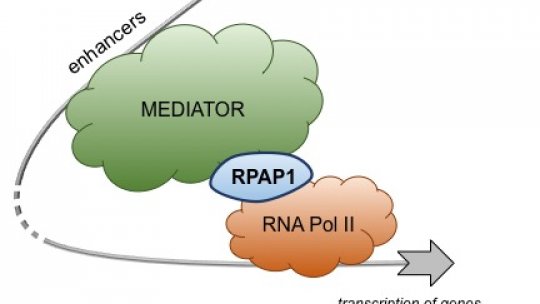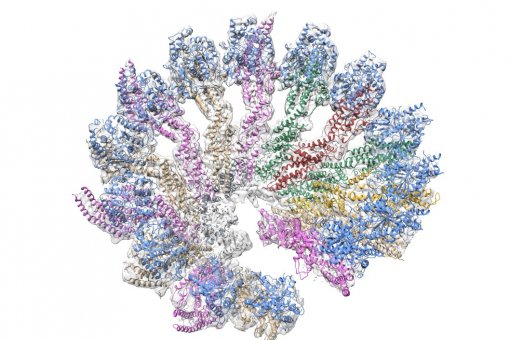Images
Participants

Contact

It is a factor that has been conserved through evolution, from plants to mammals
RPAP1 regulates the activity of RNA polymerase II by means of its interaction with gene transactivators
The regulation of the activity of RNA polymerase II, which catalyses the transcription of DNA in order to generate messenger RNA, is central to cell differentiation and the maintenance of cell identity. RPAP1 is a protein associated with this enzyme whose function in mammals was unknown up until now. A study carried out at the Spanish National Cancer Research Centre (CNIO) and the Institute for Research in Biomedicine (IRB) in Barcelona, demonstrates its key role in establishing and preserving cell identity through the regulation of this polymerase. The research has been led by Cian Lynch and supervised by Manuel Serrano, and it has been published in the journal Cell Reports.
RNA polymerase II is an essential enzyme involved, among other processes, in the transition of cells from undifferentiated states to specialised cells. For example, from a cardiac stem cell to a cardiomyocyte. This enzyme is also essential in the preservation of cell identity, the loss of which causes serious diseases such as cancer.
Among the factors involved in the regulation of this enzyme is RPAP1. It is a protein that has been highly conserved through evolution, from metazoa to plants and mammals. However, its role in the latter had not been described before.
It is known that the activity of RNA polymerase II is regulated by gene elements acting at distance and technically known as “enhancers”. These gene elements are bound by a complex of 30 proteins known as Mediator which interacts with the RNA polymerase II, but the details of this process were unknown. The new research identifies the RPAP1 protein as the key element that constitutes the “bridge” between Mediator and RNA polymerase II.
“We have described the function of RPAP1 in mammals and we have noted relevant parallels with its plant counterpart”, the authors point out in the journal. Based on these observations, “we propose that it is an ancient mechanism for triggering the transition from the pluripotent state towards cell differentiation".
The Genomic Instability Group, the Bioinformatics Unit and the Transgenic Mouse Unit at the CNIO, along with scientists at the Spanish National Centre for Biotechnology (CNB-CSIC), at the University of Lisbon and at the University of Luxembourg have also participated in this research. The research was funded by the Spanish Ministry of Economy, Industry and Competitiveness, the European Regional Development Fund, the European Research Council (ERC), the European Union, the Botín Foundation and the Banco Santander, through Santander Universities, the Ramón Areces Foundation and the AXA Foundation.
About IRB Barcelona
The Institute for Research in Biomedicine (IRB Barcelona) pursues a society free of disease. To this end, it conducts multidisciplinary research of excellence to cure cancer and other diseases linked to ageing. It establishes technology transfer agreements with the pharmaceutical industry and major hospitals to bring research results closer to society, and organises a range of science outreach activities to engage the public in an open dialogue. IRB Barcelona is an international centre that hosts 400 researchers and more than 30 nationalities. Recognised as a Severo Ochoa Centre of Excellence since 2011, IRB Barcelona is a CERCA centre and member of the Barcelona Institute of Science and Technology (BIST).




